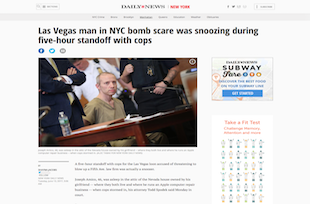New York Possession of a Weapon Lawyer If you've been charged with possessing an illegal…
Service Oriented Law Firm
WE'RE A BOUTIQUE LAW FIRM.
Over 50 Years Experience
TRUST 50 YEARS OF EXPERIENCE.
Multiple Offices
WE SERVICE CLIENTS NATIONWIDE.
WE'RE A BOUTIQUE LAW FIRM.
TRUST 50 YEARS OF EXPERIENCE.
WE SERVICE CLIENTS NATIONWIDE.







In New York, criminal possession of a weapon in the second degree is a serious felony. New York is notorious for strict gun laws. And prosecutors will push for the harshest penalties for cases which involve criminal possession of a weapon.
The most common weapon offenses under New York Penal Law Section 265.03 include:
An individual may be charged with criminal possession in the second degree if he or she possesses a loaded gun with the intent to use the weapon in an unlawful manner against another individual. The “intent to use” is a complex area under New York law. There is more to this law than an individual pointing a gun (with the safety off) at another individual. Jury members are allowed to assume certain inferences based off circumstances surrounding the incident. Which is used to determine the individual’s state of mind when the gun was on his or her possession and if an intent to use was present.
If an individual is arrested during an illegal drug transaction, and the jury found the individual had a gun on his or her possession, the law permits the jury to infer that since the individual took a loaded gun to the transaction, he or she intended to use the weapon unlawfully against another individual.
An individual which has been charged with possession of a loaded gun with intent to use it should contact an experienced New York criminal defense attorney who understands firearm laws in New York.
It doesn’t matter of intent to use. If an individual is found guilty of criminal possession of a weapon in the second degree outside of his or her home or place of business without a permit, then he or she could face serious consequences. In order for an individual to legally cary a firearm in New York, he or she must have a permit which is issued by the State of New York.
It is also important to note that even if an individual has a license to carry a firearm in another state, an individual can be charged with criminal possession of a firearm if the gun was loaded and not in his or her home or place of business.
Furthermore, what legally defines a loaded gun is complex. When most individuals think of a loaded gun, a revolver with bullets in the chamber comes to mind. However, the legal definition of a loaded weapon goes far beyond that. According to New York law, a gun is considered loaded even if there are no bullets in the weapon but they were in close proximity to the individual with the firearm.
criminal possession of a weapon in the second degree is a Class C felony. If an individual is charged with this offense, there is a minimum prison sentence of 3.5 years if the individual has no previous criminal record. The maximum sentence for this charge is 15 years in prison. Since these are mandatory sentences, a judge will not be permitted sentence an individual to probation.
If an individual is charged with possession of a weapon in the second degree, it is imperative to have legal representation which understands the laws and exceptions. Which increases the likelihood of a successful verdict.
According to New York Penal Law, Part 3, Title P, 265.03, an individual is guilty of a felony criminal possession of a weapon in the second degree if he or she intends to use a weapon and possess any of the following:
When a police official discovered a firearm on an individual during a traffic stop, the law states the stop must have been lawful. If a police officer did not have probable cause for the stop, it could be used as a valid defense during a trial. Which is because the traffic stop was unlawful and the evidence found is inadmissible. In these circumstances, a prosecutor will have no choice but to dismiss the charges.
Those who are facing criminal possession of a weapon in the second degree should enlist the help from a skilled defense attorney. If an individual is found guilty of this offense, the mandatory sentence is harsh. So the best chances for a successful outcome is to obtain a knowledgable attorney which understands how to build a strong defense.

Very diligent, organized associates; got my case dismissed. Hard working attorneys who can put up with your anxiousness. I was accused of robbing a gemstone dealer. Definitely A law group that lays out all possible options and best alternative routes. Recommended for sure.
- ROBIN, GUN CHARGES ROBIN
NJ CRIMINAL DEFENSE ATTORNEYS